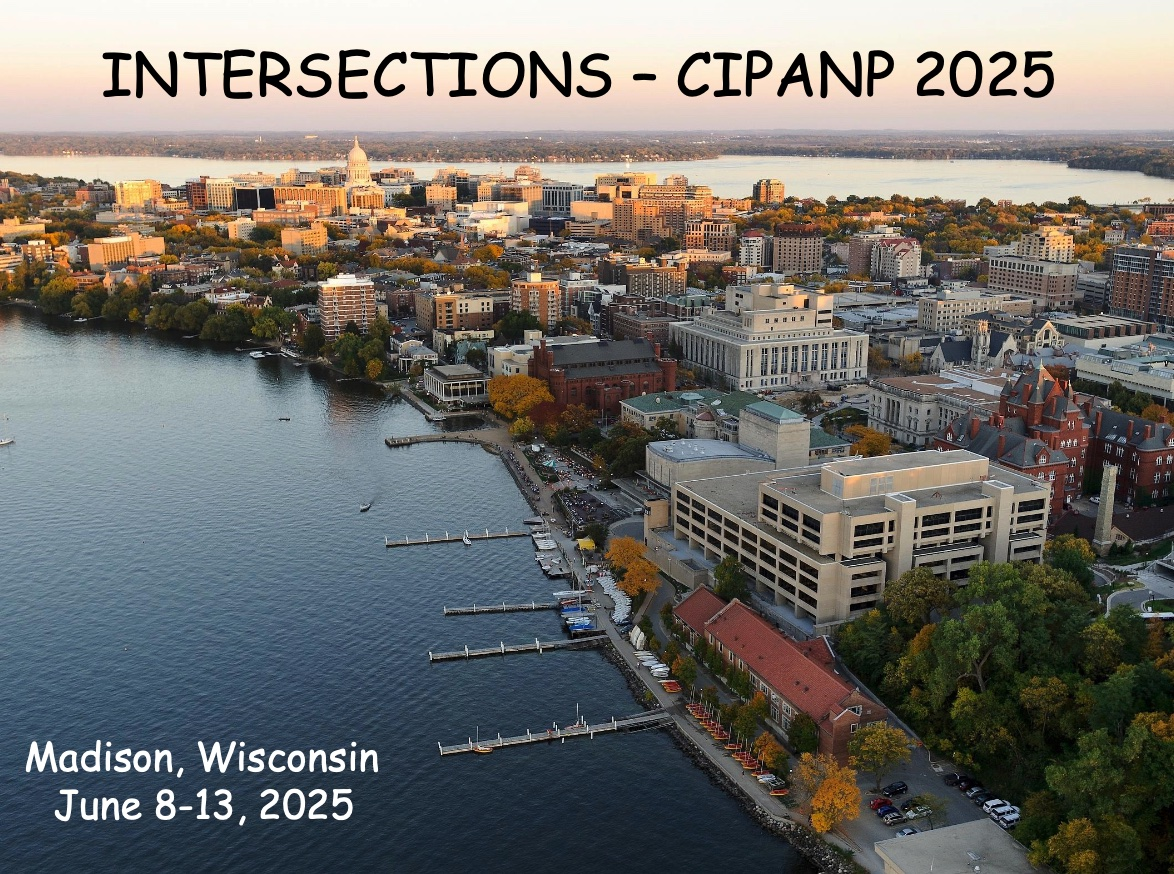Conveners
Nuclear Forces and Structure, NN Correlations, and Medium Effects: Parallel 3
- Dien Nguyen (University of Tennessee, Knoxville)
Nuclear Forces and Structure, NN Correlations, and Medium Effects: Parallel 9
- Burcu Duran (New Mexico State University)
Nuclear Forces and Structure, NN Correlations, and Medium Effects: Parallel 6
- Ronen Weiss
In the Jefferson Lab experiment E12-06-105 we measured the inclusive scattering from a series of light to heavy nuclei at $x > 1$ in the quasi-elastic regime. The measurement of quasi-elastic scattering from extremely high-momentum nucleons at moderate $Q^2$ but very large $x$ is a great tool to gain insight on the short-range structure and nucleon–nucleon correlations in nuclei. The...
The mechanism of quark modification in bound nucleons (EMC effect) remains unexplained forty years after its initial observation. Inclusive DIS measurements have characterized the EMC effect for a wide range of nuclei, and experimental results from Jefferson Lab indicate that there is a strong correlation between the number of nucleons bound in short-range correlated pairs (SRCs) and the...
The University of New Hampshire polarized target lab uses dynamic nuclear polarization to achieve high tensor polarization in solid deuterated target material, such as ND3 and deuterated alcohols. This system is comprised by a number of subsystems including a 1 K liquid helium refrigerator, a solid state microwave emitter, and a superconducting magnet. During periodic “cool-downs” polarization...
An accurate description of short-range physics is a significant challenge in the study of strongly interacting quantum many-body systems. In nuclear physics, large short-range correlations (SRCs) hinder the use of different numerical methods for obtaining a complete picture of nuclear systems and supporting beyond-Standard-Model searches. Nuclear SRCs have been studied extensively in the last...
Short-range correlations (SRCs) in nuclei manifest as nucleon-nucleon pairs and are responsible for the high-momentum tail of the nuclear wave function. SRC pairs are predominantly proton-neutron pairs due to the influence of the tensor force. While the properties of these pairs appear to be universal, key questions remain which nucleons pair in the quantum many-body system. To explore these...
The tritium target program at Jefferson Lab enabled a range of unique studies of the neutron, allowing for extractions of the neutron magnetic form factor and parton distributions. The comparison of the mirror nuclei 3H and 3He also allows for studies of the isospin structure in multi-nucleon configurations, specifically two- and three-nucleon short-range correlations (SRCs). JLab experiment...
Nuclear electromagnetic observables, such as electric dipole polarizabilities, provide a key link between nuclear structure and astrophysics. In fact, they strongly correlate with parameters determining the nuclear matter equation of state, while offering insight at the same time on the collective excitations of the nucleus at low energy.
Computing these observables is challenging, as they...
Assessing the effect of nuclear and hadronic uncertainty on the interpretation of experimental data is of fundamental importance for electron and neutrino experiments.
Traditionally, Quantum Monte Carlo calculations of lepton-nucleus scattering have been limited to inclusive processes, and are usually limited to A<=12 systems.
I will discuss the short time approximation, a factorization...
Quantum computing offers a promising path forward for tackling the exponential complexity of nuclear shell-model calculations, which lie at the heart of understanding nuclear structure. As classical approaches face scaling limits, especially for mid-mass and heavy nuclei, the development of resource-efficient and noise-resilient quantum algorithms has become an important focus within nuclear...
A variety of low-energy, high-precision experiments such as atomic spectroscopy and lepton scattering are used to test the electroweak structure of light nuclei. The theory support for these experiments is often rooted in modern effective field theory (EFT) techniques. However, it is necessary to include the effects of radiative corrections at the precision relevant for many experiments, which...

